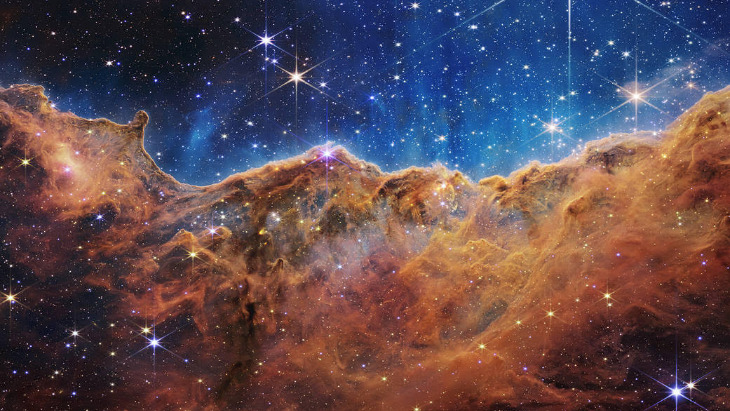 Iran’s Attack on Israel
Iran’s Attack on Israel


5 min read
The world shares a glorious moment of awe.
This week my recital of the Shema prayer was different. Ever since NASA released the first images from the James Webb space telescope, revealing the largest and most intensive view of the universe, I pray with a greater sense of awe and a more profound awareness of the greatness of God as the Creator of the universe.
It is simply beyond the ability of my mind to comprehend. As astronomers explain, every dot in the image is a huge galaxy:
“While there are a few interloper stars in the photo, nearly every dot in the image is a galaxy. For a sense of scale, if you could hold a grain of sand at arm’s length up to the sky, that spec is the size of the view. It is one minuscule sliver of our universe, filled with thousands of galaxies, each with billions or trillions of star systems in each of those with its own planets.”
In a sense, the Webb telescope photo is a visual affirmation of one of the most powerful foundations of faith.
Maimonides writes in his classic compilation of Jewish law in the Mishnah Torah that Jewish faith should be grounded in the love and awe of our Creator. Maimonides describes the path to knowing that God exists:
“When a person contemplates His wondrous and great deeds and creations and appreciates His infinite wisdom that surpasses all comparison, he will immediately love, praise, and glorify [Him], yearning with tremendous desire to know [God's] great name, as David stated: ‘My soul thirsts for the Lord, for the living God’ (Psalms 42:3). We know God by way of the wondrousness of his creations. ‘When I see Your heavens, the work of Your fingers... [I wonder] what is man that You should recall Him’ (Psalms 8:4-5)”.
In the prayer book, we preface the Shema’s declaration of faith with a blessing. Its theme is the grandeur of nature, the glory of creation, the vastness of the universe – and the miracle of its ongoing and daily renewal. “How numerous are your works, O Lord. You made them all in wisdom. The earth is full of your creations…. And in his goodness he continually renews the work creation, day after day” (Psalms 104).
There are those who have long professed the belief that science and religion are at war with each other. Albert Einstein disagreed. “The more I study science, the more I believe in God,” he is reported to have said. Science has as its goal discovering the laws which govern the universe; religion reminds us of the identity of the lawgiver. Laws do not come into being on their own. And laws of the universe are the products of a divine intellect.
Joseph H. Taylor, Jr., Nobel Prize winner in Physics for the discovery of the first known binary pulsar, and for his work which supported the Big Bang theory of the creation of the universe, said, “A scientific discovery is also a religious discovery. There is no conflict between science and religion. Our knowledge of God is made larger with every discovery we make about the world.”
The Torah begins not with Abraham or with Mount Sinai. It starts with creation - the one act which immediately stamps the world with its divine origin. And many of the greatest minds of science have had the wisdom to acknowledge it.
Looking at the startling photos now available to us from the Webb telescope reminds me of the insight of Physicist Ernest Walton, winner of the 1951 Nobel Prize in Physics for his “atom smashing” experiments, the first person in history to artificially split the atom: “One way to learn the mind of the Creator is to study His creation. We must pay God the compliment of studying His work of art and this should apply to all realms of human thought. A refusal to use our intelligence honestly is an act of contempt for Him who gave us that intelligence.”
Paul Davies, the prize-winning physicist and author of God and the New Physics, shared this important insight in his acceptance address of the 1995 Templeton Prize:
“People take it for granted that the physical world is both ordered and intelligible. The underlying order in nature – the laws of physics – are simply accepted as given, as brute facts. Nobody asks where they came from; at least they do not do so in polite company. However, even the most atheistic scientist accepts as an act of faith that the universe is not absurd, that there is a rational basis to physical existence manifested as law-like order in nature that is at least partly comprehensible to us. So science can proceed only if the scientist adopts an essentially theological worldview.”
My recitation of Shema has always expressed my firm belief in an Infinite Being who “In the beginning God created the heavens and the earth”. Today, with the Webb images and greater scientific progress, my belief in God is more certain than ever.
